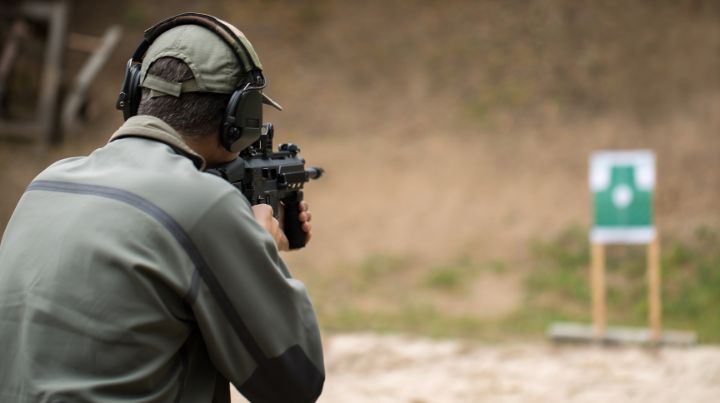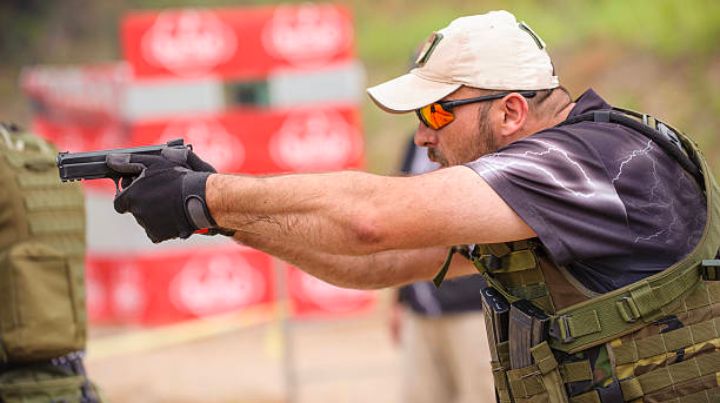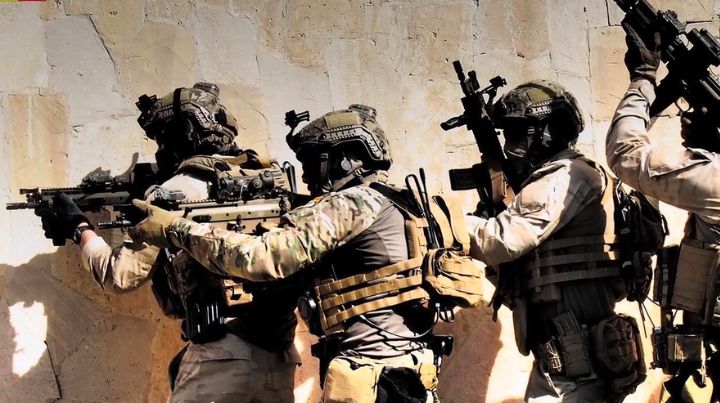Choosing a Firearms Training Instructor – Details Matter

Maybe it’s always been this way, and I’m just now noticing it. Maybe it’s because I’ve been an instructor for a long time, and my eyes are better tuned to looking for detail in student movements or actions. Maybe it’s because there are more instructors putting out video content. I’m sure it’s a little of all of it. I’m talking about instructors putting out information and demonstrating techniques, and based on what I see the INSTRUCTORS doing, clearly, many don’t have a solid grasp of the subject matter. Or at least not to the depth and fidelity that I think an instructor should.
Students Are Supposed to Make Mistakes
I don’t base my observations on the instructor’s students. Students are supposed to make mistakes and should be given feedback to implement the correct technique at the appropriate time. How can a student do that if they aren’t seeing it in the instructor? The issue is poor demonstration leads to poor replication, translating to poorer performance under pressure. This isn’t the kind of training that doesn’t have consequences. The information instructors are putting out could very well save or cost someone their life.
Firearms Training: How It's Done Right

I’ll give a couple of examples of what I’m talking about. In the mid-2000s, I had the pleasure of training with Craig Douglas (Southnarc/Shivworks) for the first time. Craig is a phenomenal instructor. He builds curricula that are relevant and pressure tests his content over and over, continuing to adapt and evolve. Agnostic of the type of subject matter, he also puts out the information to the students better than most any other instructors I’ve seen.
For the purposes of this discussion, I want to bring up one specific firearms training technique; shooting a handgun from retention. Craig explains and demonstrates with very specific detail the elbow as it relates to the draw, correct placement of the base of the mag, a pectoral index, and placement of the support arm and hand for defensive purposes as well as to maintain safety. Once this is demonstrated the students get repetitions, starting with deliberate step-by-step instruction and continuing through force-on-force problem-solving using the same technique.
Instructors Are Not Supposed to Make Mistakes
What I see other instructors putting out is NOT THIS. I see instructors basically holding their handgun close to their body, with no index points, no verification of groups or impact on a live fire range, no repetitions working from retention to supported shooting or in reverse, and no pressure testing with force-on-force. I see something closer to the Col. Rex Applegate method of point shooting. Maybe I’m exaggerating a bit, but not much. It’s easy for the trained eye to see what the shortcomings with these lesser iterations of the technique look like and also what the results will be when pressure tested.
I want to pause and say that not all instructors are putting out subpar information on the subject matter. There are some really good firearms training instructors out there teaching “fighting in a phone booth.”
Working In and Around Structures With a Long Gun
My second example is related to working in and around structures with a carbine, rifle, long gun, etc. I’m aware of the difference, but I’ll interchange the terms throughout the discussion. Specifically, I’m talking about compressing the rifle to assist in clearing a door. This technique was first introduced to me almost a decade ago while I was working on a couple of US government protection programs. This technique was practiced on the flat range so the shooter could build confidence in his ability to engage a target at an expected distance with expected accuracy. This was drilled back and forth, from a compressed gun to a typical rifle shooting platform, and the ability to shoot anywhere through that motion.

The Primary Benefit
The primary benefit from either the low ready or high ready is to make entry into a room while still having the muzzle of the rifle immediately pointed at a potential adversary for an immediate shooting solution within an unknown space. The rifle should still be horizontal, moving in the same direction as the shooter's eyes, and the compression is only for the threshold itself, and the shooter should be in and out of the position as quickly as possible.
The Secondary Benefit
The secondary benefit is that there is less chance of over-penetrating the threshold with the muzzle of the weapon, giving away our position and losing the tactical advantage. The speed with which the shooter is moving, and his proximity to the door, both get a vote prior to entry, and the shooter should be aggressively extending the rifle to a typical shooting platform once through the door. “Aggressively” is the operative word, as a bad guy inside the room may try to grab the barrel, and his reward will either be a muzzle strike or being shot off the end of the gun. Play stupid games—win stupid prizes.
What I see demonstrated by some instructors is a compressed gun, but MANY times the muzzle is either too high or low to make the technique effective. The entire point of this technique was an evolution from entering an unknown space with the muzzle in the low-ready position because the rifle was too long to fit through the door. Adding insult to injury, I see a ballet-like move through the threshold, lacking any level of effective aggressiveness. Yes, I put a heavy premium on being smooth in a house, but that doesn’t mean we give up violence of action when entering an unknown space.
Make Sure Your Instructors Are Professionals
There are other examples, but I want to keep this somewhat short. For the instructors reading this, have the professionalism to know why you’re teaching certain techniques and ensure that you are demonstrating them correctly. Students, the real point of this is to look into the background of the instructors you choose and ask questions about the techniques. Take training from several instructors so you can compare and contrast.
The Bottom Line on Choosing a Firearms Training Instructor
There are many great instructors out there, and many are well-rounded and can teach across a spectrum of skill sets, but that doesn’t mean everyone with a cool resume is adept at teaching all the things. As a student, you have to evaluate if the background and skillsets are applicable to what you need. As they say, you have the rest of your life to make the right choice.
Additional Resources:
- What's the Best Weapon for Prepper Home Defense?
- How to Fortify Your Home Against an SHTF Event
- The Top 10 Prepper Skills to PRACTICE Before You Need Them
- How to Prepare for World War 3 (What to Know)
Related Articles
FREE Guide
Read the Best Seller
Join Mind4Survival
Stay informed by joining the Mind4Survival! 100% Secure! 0% Spam!
Affiliate Disclosure...
Mind4Survival is a free, reader-supported information resource. If you make a purchase through our link, we may, at no cost to you, receive an affiliate commission.
Do You Want To Be Ready No Matter What?

Download our free 39-page guide with interactive, 7-Day Emergency Kit Checklist and take the first step toward real preparedness.
- Know exactly where to start.
- Save time and money.
- How-to build a complete Basic Emergency Kit.
- Level up your safety and security.
Join Mind4Survival
Stay informed by joining the Mind4Survival! 100% Secure! 0% Spam!





